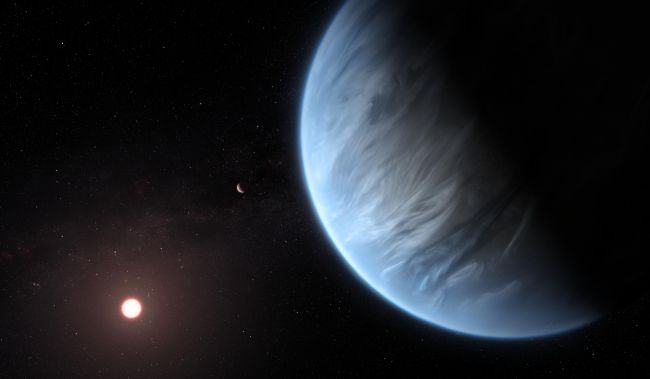NASA
For the first time ever, water was discovered in the atmosphere of a planet that could be considered habitable.
Scientists say that they made this discovery on K2-18b, which is a real contender when it comes to finding life outside of our own rock. This super Earth is 650 million miles away, but it could very well contain alien life.

This is classified as a “super Earth” planet, which means that it has Earth-like qualities but is significantly larger. It’s roughly twice the size of the Earth we know and love.
This exoplanet (which is a planet that exists outside of our solar system) is within a ‘habitable’ zone from a neighboring star. The star is what keeps the planet warm, so it is important to be an appropriate distance. Too close, and the planet is too hot to maintain life. Too far, and it is far too cold.
The temperature on this planet is believed to be between zero and 40C, the perfect range for water.
By studying the changes to the starlight as the planets orbit their own suns, scientists are able to get a glimpse into what their atmosphere might be made up of. When looking closely at K12-18b, they realized that they were seeing in the atmosphere was water.
Of all the planets discovered by the Hubble Space Telescope between 2016 and 2017, this was the only one that contained water.
Lead scientist Professor Giovanna Tinetti of the University College London said that the discovery was “mind-blowing”.
Scientists don’t yet know what might be under that atmosphere, though some believe the planet will be more like Neptune than Earth. There is some question if a planet that size would even have a rocky core like Earth, and it is possible that it would just be all ocean. Filled with water? We don’t know, yet.
The problem with K12-18b is that is it so far away. This planet is 111 light-years away, which is much too long of a distance to send a probe.
Scientists have to wait until the next generation of telescopes come out to discover more about this planet. It’s expected that within ten years, telescopes will advance to the point where we can discover more of what the atmosphere on exoplanets just like this are made of.
Determining what makes a planet habitable is more than just about finding water, scientists warn. Millions of factors went into making Earth the perfect vessel for human life. While the markers are good so far, it’s too early to know for sure if this is a real contender.